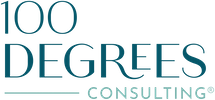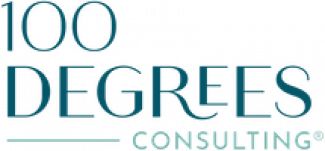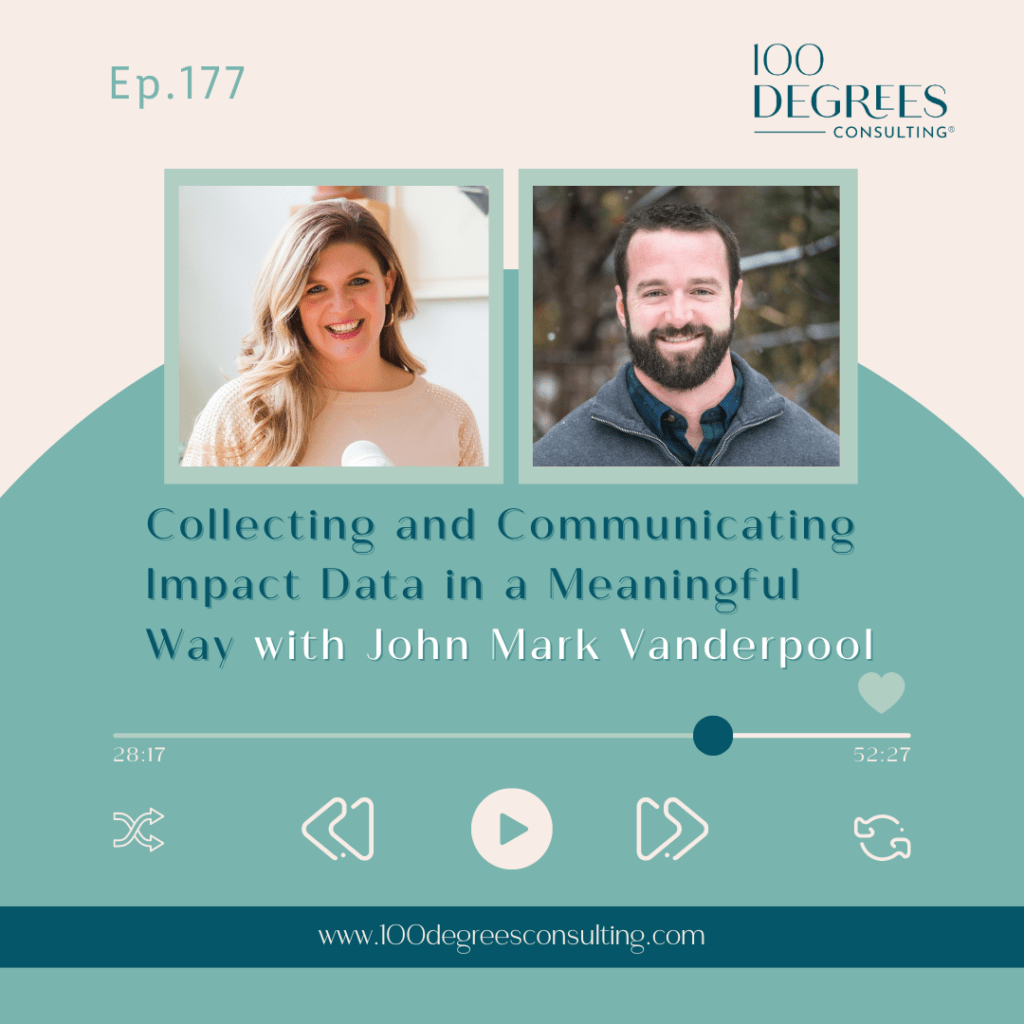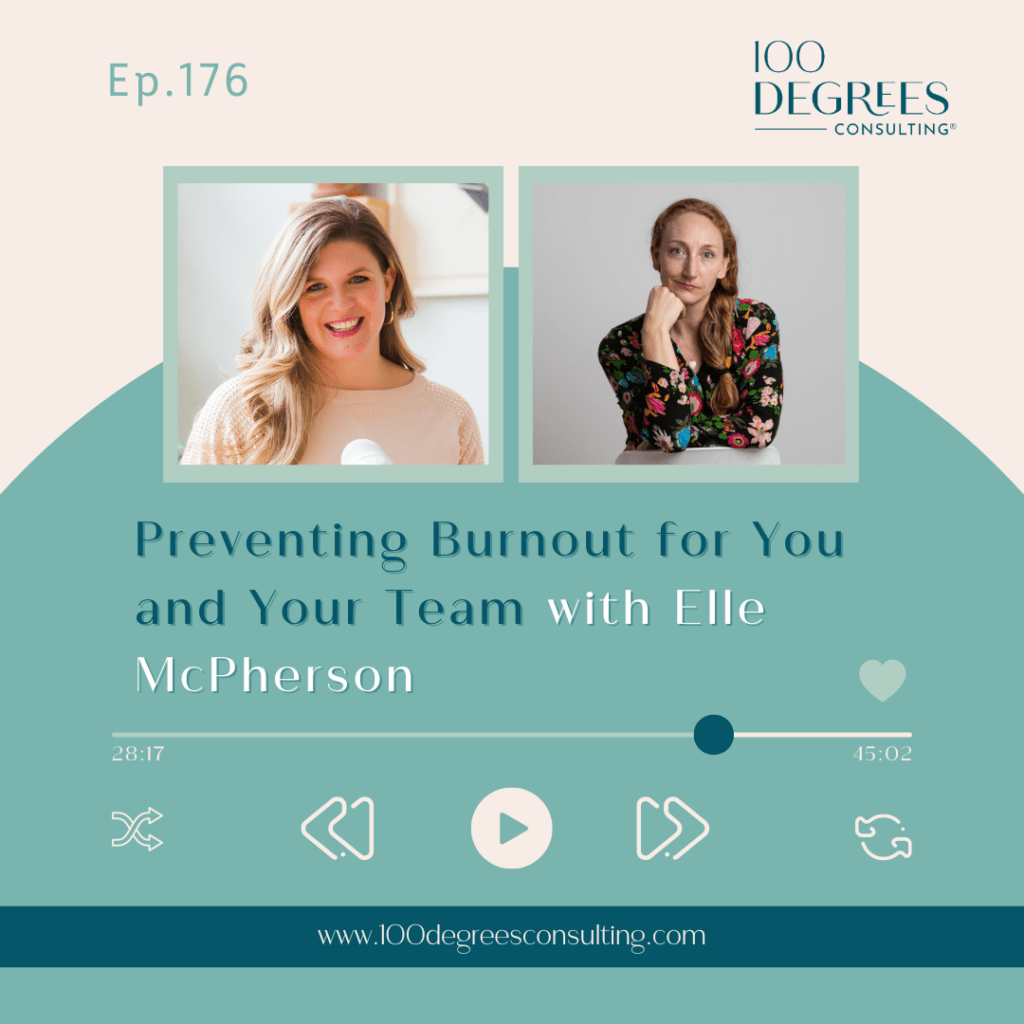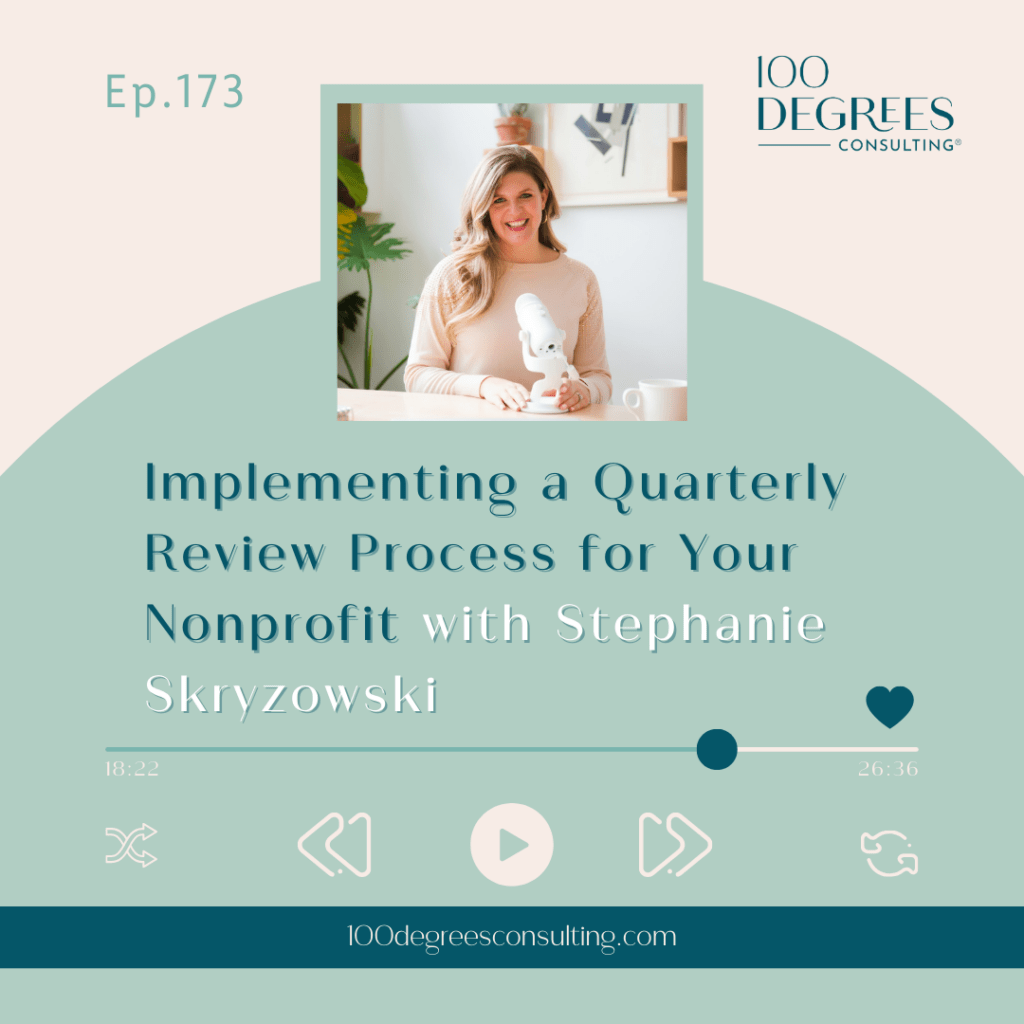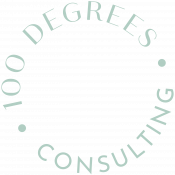Episode 53: Using Intuition & Numbers to Make Decisions with Bucketlist Bombshells Co-Founder and COO, Shay Brown
Transcript Episode 53
Stephanie Skryzowski
Welcome to the 100 Degrees of Entrepreneurship podcast the show for purpose driven entrepreneurs who want to get inspired to step outside of your comfort zone. Expand it to your purpose and grow your business in a big way. I’m your host, Stephanie Skryzowski, a globe trotting CFO whose mission is to empower leaders to better understand their numbers to grow their impact and their income. Let’s dive in.
Hey, everyone, welcome back to 100 degrees of entrepreneurship. I’m your host, Stephanie Skryzowski and today I have a special guest on the podcast.
Now, everyone is a special guest honestly, but Shay and I have known each other for a very long time.
Shay Brown is the co founder and chief operations officer at Bucketlist Bombshells, Shay has a degree in entrepreneurship, a knack for business operations, sales strategy and mentorship. So it is no surprise her passion for women starting their own companies is what gets her out of bed every morning and ready to work.
Now, Bucketlist bombshells is a multi million dollar business education company, Shay Brown and her business partner and co founder Cassie Torrecillas is our business strategist and educators for the next generation of female entrepreneurs.
Teaching more than 100,000 women around the world foundational skills and providing them with a roadmap to success is how these two Millennials traded traveling the world on a backpackers budget for a global success story. All from a lapto p in the corner of a coffee shop. They believe that a career designed to prioritize joy and adventure and purpose is achievable for all women without sacrificing financial stability.
So she and I have known each other for five years. So she will hear us talk about our humble beginnings together. And you’re going to hear Shay talk all about her journey, and really taking a leap of faith into entrepreneurship, and some of the highs and the lows and the mindset shifts along the way. And she also gives us some really, really good tips for helping a recovering perfectionist forecast.
I love this part of our conversation. Because a lot of times some of the pushback I get from clients around forecasting is, well, I don’t know what’s going to happen in the future. I can’t predict what’s going to happen. It’s not going to be perfect. And we make our forecasting kind of mean something about ourselves as CEOs and as business people.
Shay really talks about the way that she forecasts and the process that she uses to figure out like how much money a new project is going to make if she walks us through all of it. And she’s told us about the biggest mindset shift that she has had in running her business.
I hope you enjoy this episode. I really loved catching up with Shay who is a client and a friend. And I think you’ll love this one.
So let’s dive right into Shay Brown and Bucketlist Bombshells.
Hey everybody, welcome back to 100 degrees of entrepreneurship podcast. I am super excited to have Shay Brown from Bucketlist Bombshells on the show with me today. Welcome Shay.
Shay Brown
Hi, Stephanie. I am so excited to be here with you today as well and be a part of your podcast. Thank you for the invite!
Stephanie Skryzowski
Yeah, yeah. Shay and I have known each other for almost five years now. I think we met in a mastermind I know it’s honestly seems like it was maybe two years ago. But I think we all join this mastermind in the end of 2017.
Shay Brown
Yeah. Wow. That actually seems so far away. I mean, I feel like probably everyone feels like the past two years. Were just like, an extension of like, a decade or something like that. Yeah, five years ago, right! That was such an amazing mastermind. We I know we met and as well as like meeting so many other incredible women, too. Yeah.
Stephanie Skryzowski
Yeah. And it’s been such a pleasure to work with you. So your business is also a client of mine. And we’ve been able to like watch each other’s businesses grow so much and change and shift over the last five years. It’s just been such a joy.
But I would like to rewind a little bit because I know that your journey does not begin with Bucketlist Bombshells. So I would love to kind of hear what your journey looks like and how you got to where you are now.
Shay Brown
Yeah, for sure. I know. I mean, even thinking timeline wise, it’s been about a decade since I’ve started my first business.
I’m kind of having a full circle moment because I’m currently in Mexico and in Playa Del Carmen, and it’s actually where I started my first business. So this is like, the perfect grounds for me to start from the beginning.
Stephanie Skryzowski
Love it. Oh, tell us everything.
Shay Brown
Okay, so, basically, I started a service based business, which is now what I teach inside of Bucketlist Bombshells on how to start, run and grow a service based business. But when I first started out this was back again. This was like 10 years ago. So, and I started out as a social media manager, but totally self taught through like trial and error. Like I watched YouTube videos. And then I just got on social media and started doing things for my clients and kind of learning on the job.
Because back then it was such like a new profession, I guess, so to speak, we didn’t even learn about it I was in you just got it straight out of university. And we hadn’t even learned about social media marketing and university. So it was kind of becoming this new, trendy thing.
Social media was like a personal platform, and people shared about their personal lives for many years. And then marketers started using it as a platform to connect and engage with their audience and find new people for their products and services.
So, I thought that this area was just so fascinating. And I love being first to market first in the industry. It’s like, I like being an innovator. And so I think that that really kind of excited me about this new role and this new challenge.
I took that on just sort of self teaching, and I got my first client, I didn’t set out the way that I now teach people to set out on the course of starting a service based business that wasn’t really a thing. Sorry. An online service based business, that wasn’t really a thing back then. So, I didn’t really start out with the idea that that’s what I was doing.
I more so started out, looking for a job at a university. Stumbling into this sort of new niche and then finding a client. I guess I would say they were a startup. And finding this client and then sort of realizing, through research and other mentorship, that running an online service based business was a possibility.
When that sort of clicked for me when I kind of had my lightbulb moment there and saw someone else doing it. So I saw someone running online website design service based business, she became a mentor of mine. That really showed me that this was world was possible.
I am such a nerd, so to speak, a self proclaimed nerd that I was just soaking up all the information possible on what that even look like what that even meant. And so that was the start of my first company. Travel has been a big thing of mine. And we’ve incorporated it and we are called the Bucketlist Bombshells for a reason.
Cass and I were traveling the world pre pandemic. And so at the time, I booked a one way ticket to Mexico down here to Playa Del Carmen about 10 years ago. And decided if it was an online business, why couldn’t I run it from anywhere in the world?
So I said, Alright, let’s try this. And I started getting myself like the outwear. It was like, Okay, I’ll just go down and maybe for a couple months, and gain some experience, and then go back and get a corporate job and maybe do the entrepreneur thing later.
The entrepreneur route was always the route I wanted. That’s what I went to business school for. But I thought, you know, I was told you needed to have corporate experience. So it wasn’t, again, a planned thing. But I went down. And I just started soaking up again, all the knowledge I could under the sun.
I started learning how to find online clients, how to invoice, how to price and package services, how to host sales calls, and I became really good at it. And I actually was able to basically have what I would consider like a full time corporate level salary, within like a couple months.
So that’s the start of my story. And then how I got into service based business. And in that process, I met cast as well in Mexico, which I think is just such a fun part of our story. We met here in Playa Del Carmen, and she was doing the same thing, but in the graphic design world.
So that’s pretty much how we got started from the beginning!
Stephanie Skryzowski
Oh my gosh, I love your story. I’ve heard your story before. And I love it so much. I have to ask though. So like booking a one way ticket to Mexico, like that seems very gutsy to me. I know. You’re also a very like strategic, methodical, calculated person. And so I’m the same way. Did you feel like that was out of your comfort zone? Or did you know like, I don’t know, like, how did that feel? That seems scary.
Shay Brown
Yes. Okay. So I am, as you know, a very methodical planned person, but I have this personality tick, where I sort of just like, just all of a sudden throw caution to the wind and I just do something that’s on my heart.
And sometimes it’s as dramatic as a switch being just sort of flicked, and that’s kind of what happens here. It’s happened in a couple more times in my life. But really, my sister was the one who gave me the big push to do it.
So I booked the one way ticket and then two weeks later, I was down here. So it was like just a spur of the moment decision because I had already been doing it back home in Canada. I had been working with the one client as a social media manager. And I guess I was more of an employee base and then we switched to being what now is referred to as contract base or service based contractor.
I had seen other people like it kind of in the world. of online marketing, living in other places, I had this desire to travel since I went to France during my I did Co Op program through business school and I went to France and I fell in love with other cultures. It has always been on my heart and this desire of mine. But I didn’t want to do the backpacker budget life. And so I was always trying to figure out.
I’m a career girl. So I was like, How can I still build my career while traveling? And, you know, I saw my mentor doing this. And so I said, You know what, I could do that too. As long as I have an example of one person doing it. I’m a type of person that’s like, if that person can do it, I can do it, too.
And so that was what put the desire on my heart. And then it just sort of reached this culmination of, like, I wanted a change. That’s where sort of I have this personality type. Or once I want that change, like, that’s it. And that’s like, what I’m focused on. I was nervous.
So I booked in and I told my family, and my sister was there with me. And she was the one basically encouraging me. She’s like, my biggest cheerleader, my biggest supporter in life and everything I want to do. She’s always like, yes, go for it. And I love her for it. Because after I booked it, I kind of had that, you know, that like decision hangover almost ran away. What did I just do?
And like, yes, the fear sort of started coming up for me. Like, oh, new country by myself, like, don’t speak the language like I was so young. And Newton, like no one was working in traveling much like I’d seen some examples and some blog posts. And she was just such a big supporter and advocate and really alleviated those fears.
I think being strategic and methodical or pre planned was, and this is something that I think I would love to give like yourself more flexibility. And but I, you know, kind of gave myself that timeline.
I said, Okay, I’m going to go down for three months, if I can make it work in three months, great. I can figure out what the next steps are. And if I can’t make it work within three months, then I’m coming back and I’m getting a corporate job. So I sort of had this like three months sort of game plan in my mind. That’s also once I have that kind of a game plan. I’m like, so super focused, and I sort of just release any of those fears.
And just say, okay, like, if you can do this in three months, great. If you can’t, that’s okay. Go and like do something else. I think it’s a little bit too rigid. I’ve learned over the years that that’s not how life is lived, and life happens.
And we’re emotional creatures, and we are, you know, new opportunities come up in different things. So I would say that that’s not exactly how I live my life anymore. But in the beginning, that was a very much how I alleviated those fears. I pretty much gave myself a structure for like, succeed or fail.
Stephanie Skryzowski
Oh, yeah, I like how you sort of had this combination of like, okay, we’re going to plan things out. We’ve got this three month timeline, but like, just for the moment when we’re just we’re going to Mexico. Two weeks later, you’re on a plane.
So I think that’s like such a good combination. And I really like what you said about how you decided like you didn’t want that backpacker lifestyle. And I feel like often when we think about being a digital nomad or like working from anywhere you’re picturing, like, living in hostels that cost like $10 a night.
But like living out of a backpack and that’s not the life you want it so that’s the life you created. And so I feel like that’s what you’re doing in Bucketlist Bombshells as well as helping other people create that life so I would love to hear what Bucketlist bombshells, how Bucketlists Bombshells came to be? And what do you guys do?
Shay Brown
Yeah, of course. So yeah, Bucketlist Bombshells is the company that I run with Cassie, and we teach online service based entrepreneurship, to give people the freedom to live a life filled with joy and purpose and freedom and fulfillment, and the ability to work remotely from wherever they want.
And these tennents, these pillars, these principles, these values that we’ve held, we’ve held from the beginning. And so we were traveling the world and we were running our service based online businesses. We were figuring it out, especially back then there were not online courses on how to do this.
We were figuring it out along the way. And as we were traveling, we were meeting more and more incredible women travelers, but they were doing sort of the backpacker lifestyle.
They were doing the Okay, I’ve saved up enough money. I’m going to go travel and then I’m going to go back and get a job. I’m going to save up and then I’m going to go travel and it was sort of this cycle that they were doing. Or they were traveling with a partner. And their partner somehow was working online and they were supporting their partner emotionally and as a partner.
So there were kind of these two groups of women that we were meeting and every time we would sit down with them and get to know them. They were just so excited about the idea that they could potentially do what we were doing not little backpackers lifestyle. Run an online service based business that allowed them to at that time, freedom and fulfillment for them was traveling the world.
I think as we grow as individuals that concept of freedom and fulfillment becomes different and in different seasons of life. It’s why it’s still a part of the values that we teach and the tenants that we teach.
One of the areas is your business and to have an online service based business is going to allow you to have that freedom. So maybe it’s not to travel, maybe it’s to spend more time with your family. Or to be able to schedule your day the way that you want to schedule it and incorporate things that bring you joy, like fitness, or healthy eating or time spent with family and friends or time spent on hobbies.
And also running a business that feels purposeful and connected to something that you’re doing. I think for a lot of my students, is that the fulfillment and the purpose comes from the work that we do, because we’re doing it for someone in this one on one manner. You’re not necessarily doing it for a corporation, where maybe you’ve never engaged with the clients, or you don’t feel connected to their mission, necessarily.
I have friends that absolutely love their corporate jobs, and they’re so connected to the mission. I think that’s amazing. And I think there’s also a percentage of us that don’t feel that way.
I think when we have our own business, we get to feel that sense of fulfillment and purpose and joy and freedom, because we have control over what we’re doing, what we’re saying, what we’re executing, and who we’re working with, as well. I just think that that brings a lot of joy into your life when you have that.
So we were traveling, and we were meeting these women. And so we started sort of just across the coffee table, just telling them what we did and the steps that we did. And we decided at some point that we wanted to be able to reach a larger audience. We started a community of women online. And then we started realizing that we were really good at teaching and we had a roadmap.
We had this blueprint, which is now called the Bucketlist Bombshells Academy, and it’s made up of three courses. And we take you through first the foundations of learning skills that you can sell us services. So we have our tech skills course and our design skills course.
In there, we teach graphic design, we teach social media management, website design, project management, really the most common services that most of us can either learn or already have some skills in that then you can turn into the services to sell to clients online.
And then our third course, inside the Bucketlist Bombshell Academy is our business skills course. And that’s where we actually teach you how to price and package, set the foundation for your business processes, how to find and land clients, how to hold sales calls, and how to manage your finances and start growing your client base as well and getting yourself booked out.
In the beginning, we were teaching these sort of across the coffee table, we had this roadmap. And so at the time, it just made sense to reach a larger audience and to be able to have a larger impact to be able to put it into a course format, which we’ve now done.
So, we have these series of online courses and we have some add on courses now some more advanced and niche courses. As our students have grown, we’ve wanted to provide them with that information as well.
So that is how Bucketlist Bombshells came to be and what it is now!
Stephanie Skryzowski
Oh my gosh, it’s so cool. Like I said, I’ve kind of watched your journey from the sidelines. And I mean, you all have helped like 10s of 1000s of women, right? Like give them the skills to build a business and a life really with the freedom that you all have. That’s so amazing. I can imagine that like having this business has given you so many opportunities to like, do cool things and make an impact.
Like do you have a favorite impact moment in Bucketlist Bombshells history?
Shay Brown
I do. I mean, I have a couple but okay, I’m gonna focus on the main one that came to mind as soon as you asked me that question. And that one was when we got to travel to Nepal to visit the school that Maggie runs, it’s called the Blink Now foundation. It’s the Coppola Valley School for Children.
And it’s insert had and we were able to visit it in person. We’ve been big donors for this organization. We actually started donating a percentage of our profits right from the beginning, like right from day one that was our biggest one of our pillars and one of our biggest initiatives.
I think the most impactful moment was going there and actually seeing the lives that were changed through my students, because it was profits and proceeds from our students and from Cassie and I’s mission to empower women around the world and these women, and these young children don’t have access to proper schooling, even nutrition or counseling or support.
And to go there and see the work that Maggie’s doing with Coachella Valley and all of Her children is just incredible. It’s so gives me chills. That moment was such an impactful moment for me seeing the impact, that even small acts can create change and can make a huge difference. So, that was probably the most impactful moment for me as a part of Bucketlist Bombshells.
And then I think the second impactful moment actually happens almost monthly, if that makes sense. So what I mean by that is we have these students spotlights, and we feature our students. We asked them to tell us just very similarly, what you just asked us, is about their journey towards freedom and fulfillment.
I always love seeing these stories, because again, it gives me that connection. It shows me the impact that my framework has made, or my lessons have made. And it’s not just about teaching business skills, it’s about hearing their stories on what freedom and fulfillment looks to them.
Sometimes it’s so different than what I would consider as freedom and fulfillment. And I love it. They’re always filled with such joy and inspiration. And then they’re doing this work that is bringing them that like purpose work and their work that they’re producing is amazing for these clients.
And I know these clients are benefiting from that. So I think it’s like, impactful moments have ripple effects. But it’s the smaller moments.
For me, it’s the hearing one student’s story is an impact to me, or traveling to Nepal, and meeting one children at this school that we’ve impacted is an impact to me that just brings so much joy and fulfillment from the work that we do.
Stephanie Skryzowski
Yeah, oh, that’s great. I love that you feature a student every single month. Because I think that, especially sometimes as an entrepreneur, it’s kind of easy to lose your purpose, right? Like, well, there’s so many things that we have to do all the time. And it honestly can be kind of stressful when you like, run this whole business.
And so to intentionally connect yourself back to your mission, every single month, and your purpose, I feel like it’s so important. So I love that you do that. And I remember when you went to Nepal, and I remember talking about that.
Nepal, has a big place in my heart and my history as well. So I completely know the feeling of like, being able to sort of tangibly feel and experience an impact like that. So that’s so beautiful!
COMMERCIAL BREAK: You hear me talk all the time about how important it is to know your numbers as a business owner. But you may be thinking, well, how in the world do I do that? Where do I even begin? So, I have a free resource for you. The profit playbook is an amazing template that you spend about 15 minutes getting it all set up. And you can literally see into the future of your business revenue, expenses, cash flow, just like a crystal ball. It is a huge resource that will absolutely help you create a roadmap to reach your goals in your business. It is for free, over at 100degreesconsulting.com/profit
And I love that you’ve made charitable contributions, part of your, your mission and kind of part of your financials, right? There’s something that you forecast for a new plan for and they’re included in your financial planning. And I know that you are a big time numbers person probably as much as I am.
I would love to hear how do you manage the numbers in your business? And we’re not talking about any specific numbers. But what’s your process for kind of keeping track of things, everybody’s got their own thing? So I’d love to hear you talk about that.
Shay Brown
Yeah, for sure. Well, you play a big role in how we manage the numbers. I’ll just kind of chat about that in terms of you know, we utilize things like QuickBooks. You and I meet and we talk forecasting. We look at, you know, where we want to invest our money and what’s coming in and what’s going out. So like we have the basics there.
But I kind of want to get into a unique approach on how we manage our numbers, but more so how we make decisions from our numbers. Because I think that what I’ve learned over the course of running this company and the financials and managing those with you is that it’s easy to do say the bookkeeping.
It’s easy to look at things and see the past, it’s much harder to forecast the future. Which I feel like that’s probably just a basic tennent, and I’m not really you know, revolutionizing the wheel on that one, but I think it was more about making decisions from those numbers.
It’s less about putting a number in the sheet and forecasting sort of what we want to see or what we you know have done from the metrics, which is like your typical forecasting. Taking your metrics and looking at based on past data. What can we reasonably assume that we can bring in as revenue from this project.
Let’s say, you know, that’s your traditional forecasting method. And it’s something that we do. And it’s something that’s very helpful. But I think when it comes down to it, making decisions and choosing which projects to take on and where to invest your time, is something that you learn through trial and error over time, or the longer that you run a business.
I think that that’s really been the biggest area that I have grown in and learned in. When you’re in a business, especially when it’s so filled with purpose and intention, you have a million ideas, and I’m sure you know, this, any entrepreneur probably knows this. You have a million ideas, a million amazing new products and services or new projects, let’s say that you can implement that will benefit your audience.
And I think when it comes to the financials, what a lot of people don’t do is they don’t sit down and actually take a look at the real numbers of each project. Because when you’re running, especially Passion Driven entrepreneurs, you don’t want to run your company based off of just making numbers as to like what drives revenue.
I think that’s a business shift over the past 10 years, I think a traditional especially when I was in business school, all decisions were made from the bottom line, the best return on investment, cutting costs, cutting corners, maybe not necessarily cutting corners, but it was always about the bottom line. And I think that as passionate entrepreneurs, we’re very connected to the product and service and our audience demands that quality and that authenticity and integrity that we’ve infused into our business since the start.
I think that when it comes to projects, sometimes you can get a little bit blindsided and that way when you’re like, oh my gosh, this is such an amazing idea. I want to release it to our audience, and you don’t really run the numbers. That’s what I say I’m like, Okay, we got to run the numbers on this.
Basically, what I’ve learned is to combine those things to combine passion and profits, let’s say. And so what we use as a method, we just call it a play sheet. And it’s a Google, it’s a Google sheet.
Essentially, we take as much historical data information from our financials as it relates to our business, our industry, let’s say our conversion rates, your email list sizing.
If you’ve had past similar projects, or launches, how did they perform all of these kind of metrics and data you pull in, and then you put them into a sheet and you sort of do your good, better best.
So I take my historical data, and that’s like, my good goal. So that’s like, Okay, I know that I can reasonably assume that’s what forecasting, I have to learn that forecasting is reasonable assumptions, I can reasonably assume that I will hit these profit targets, because this is based on historical data.
If it’s a new project, then I have to go and research and find industry standard data. And that one is a more risky project. I’ll kind of get into how we make decisions on that. But let’s first talk about how we use a play sheet to make decisions on something that we can use historical data for.
And so we have our good, better best or good is using the calculations from our historical data. Best is I usually add about 10% bump, and then my best I add 20% bump from the good version.
So there’s not a whole lot of rhyme and reason as to the 10%-20% Bump. It’s based on historical data figures from my particular company. But in the beginning, I was playing kind of a guessing game as to that. And then once you have enough of the similar project, you can see oh, did I hit? If I beat my good goal, then I usually was bumped up into my best goal category.
Not having this sheet in front of me, I hope I’m not getting too technical and detailed. That’s just who I am. I need to explain everything. Yeah, and I’m gonna try and not because I know there’s no visuals right now. So I’ll try and get to my point here.
So I have the play sheet for making decisions off of, you know, historical data for similar projects. And so then we look at it, okay, so we say, are we in a season in our business of growth or stability. If I’m in a season of stability, then I definitely want to see that these numbers, I’m going to hit my profit goals.
And that means that I need to choose projects that are more based on the higher profits that I’m going to see because I’m trying to stabilize my business. Stabilize the financials, and create sort of that reasonable assumption and confidence in the numbers.
If I’m in a growth period, their season of our business and that, you know, when our company is like, okay, what are the new ideas that maybe are a little riskier that I don’t have past historical data, I’m still going to run the numbers, but those are going to be a lot more assuming and it’s going to be a lot more based on industry standard, which what I have learned as an industry standard can be hugely skewed. And just not what you’re expecting.
So again, it’s more of like, if I’m in a growth, I’m taking bigger risks, because the bigger the risk, maybe the bigger the reward. And so that’s when I use again, might come back to my play sheet, I still run the profits, but the profit amount has less weight and the decision to do that project, as it does whether or not I think the risk is going to produce a really great reward.
So I think that that’s really what I’ve learned about managing the numbers is really understanding, running the numbers and being like, Okay, I can’t just choose projects, that on willy nilly, I really need to get serious, this is a business. Okay, let’s run the numbers, in addition to having an amazing idea that I’m super connected to, and then I kind of take a look at the business.
Are we in a stabilizing period of our company? Or are we in a growth period of our company, and that helps me make the decision on which projects to choose based on the financials? So I hope that answered your question there.
Stephanie Skryzowski
Yes. Oh, my gosh, I love it. And I’ve seen some of your places before. They’re so good, because I really love how you break down. Good, better best.
I think you’re right, like a forecast is not just like aiming for the stars and putting these like astronomical numbers in there. Because like most of the time, we’re probably not going to hit those. So I like that you kind of have staged goals like that, and using that to help you make decisions.
Oh, I get the question a lot like so obviously, you know, we work with our clients on forecasting and forecasting is, you know, making reasonable assumptions. But when you have never done something before, like you’re talking about with certain projects, it’s really hard to like, put your best guess into like, how much money this is gonna make or how much it’s gonna cost.
So I love that you’re like, you do this, right, you have had projects that you’ve never done before, and you don’t know how much money it’s gonna make. But I like how you pull information from various sources, you pull numbers from different sources to be able to come up with like, the most reasonable estimate that you possibly can.
Is it always perfect? No, it’s probably like never exactly like to the penny, but you’re pulling from your own data. You’re pulling from industry data, you’re pulling whatever resources you have together. And I feel like, I don’t know if you have perfectionist tendencies. I know I do to a degree and I know that like a lot of our clients do.
And so they get like, real itchy when we have to do forecasting, because it’s not perfect, it’ll never be perfect. Does that ever bother you? Or Or no, you know, it’s just like forecasting and creating these plays, it’s just part of business, you don’t worry about the perfection.
Shay Brown
Okay, I would love to be on the scale of not worrying about the perfection, I actually have been using this term or cast had said this term, and I kind of adopted it called recovering perfectionist. Like, yes. So I would say yes, I would say that forecasting. In the beginning, throughout this whole journey of running a business was very frustrating to me.
Because you know how much I love numbers. I like the data. I like the calculations, I like using the past past data makes sense to me. And then you would have these moments in these projects. And you would miss the mark and sometimes by a lot. It was just very frustrating to me. forecasting for a long time.
It started bringing me a lot of anxiety and makes it made me second guess myself and how I was running the company. And I think, you know, what I just explained previously was bringing in the place sheets, bringing in the good, better best. And bringing in this concept of stability versus growth is really something that now I’m starting to embody. I’m starting to let go of that perfectionist tendencies.
And I’m starting to let go of this idea that if I don’t hit a forecasted, which is an assumption at the end of the day, if I don’t hit that it means that I failed, or it means that I did something wrong in the forecasting.
What I have now learned is to use these place sheets and to use these good, better best goals. And remember that forecasting is a reasonable assumption. And then making these decisions in stability or growth periods. Knowing that I had, I am not going to come out the other side of the launch or a project being so consumed by the numbers.
That’s what was happening to me I feel and that’s not why I produce things for our audience at the end of the day. I think sometimes we get too stuck in the internal or the behind the scenes when your business has reached a certain level and you’ve grown to a certain level and you have to manage so much more operationally behind the scenes.
And you lose touch kind of with that reason for doing the project. And I think that’s why the play sheets and the stability and the growth come back into what I was talking about decision making.
That’s where I’ve started to learn how to move through those perfectionist ideals, making it mean something about who I am as a businesswoman, making it mean something about the company.
The numbers are just numbers on a piece of paper. And so to answer your question, I am a recovering perfectionist. And yes, in the past, the forecasting did start to bring me a lot of anxiety!
Stephanie Skryzowski
Well, I’m so glad I’m so glad you’ve added the like recovering part to that title. And I didn’t even think about that making the forecasting like means something about you as a person and a business owner, because I think you’re so right. Because if you’re “missing,” I’m using air quotes, if you’re “missing” the forecast, if you’re not hitting those targets, you can feel like a bit of a failure.
So that mindset shift is super, super powerful. And I feel like there are a lot of things as an entrepreneur that happened that maybe feel negative that we make into more than they really are. And I love that you said like, at the end of the day, they’re literally just numbers on paper, or numbers on a Google Sheet. That’s all they are. They mean nothing about us ourselves.
I love the way that you have kind of explained and walked us through your play sheet process and how you set goals and how you forecast and how you make decisions and, and that it’s not all about the numbers. Because at the end of the day, the work that you do and the way that you serve, the numbers are just like a side thing plays just as a side piece of what you’re doing.
You’re not out there for the numbers, you’re out there to make an impact. I just have a couple of questions. As we wrap up. These are like just the past easy questions. And selfishly I like to ask these questions, because I want to know the answer for myself to help improve myself.
So my first question is what helps you disconnect from work?
Shay Brown
Ooh, that’s such a hard one. I feel like for entrepreneurs do we really want to disconnect. But no, I’m aligned on mindset and self care, I really am.
I think for me, being able to disconnect at the end of the day is to just feel that I have, you know, accomplish what I wanted to accomplish. And I’m not talking like a huge to do list. I’m just talking like the one main thing that I wanted to get done that I feel like really good about that side or moving something forward, or making that impact or was like a fun strategy session that like lit me up.
As long as by the end of the day, I feel like fulfilled in the work that I did. That’s really how I’m able to say, okay, cool, I can put my name on this day, and I can close my laptop, and I can say, alright, let’s go have some fun.
I mean, my running a business is fun, let’s go have some do some hobbies. But I would say like, that’s also a big ask as like, I’m a recovering perfectionist.
That’s also a big ask. And not every day, I don’t want to give people the assumption that every day feels that way. Some days are harder than others and, or just more challenging. And that also helps us grow as people. So I would say that also disconnecting from me is sort of I like having like rituals and routines.
And so you know, closing your laptop, and sort of just right now I’ve been basically taking a 30 minute walk. Just to like clear my head, no music, no podcast, which I usually listen to when I walk. I just close it. And I mean, the weather is so beautiful here in Mexico.
I just go for a walk 30 minutes get my body moving, especially because I’ve been sitting down and usually when I’m working, I tend not to move at all, I pretty much just work straight through.
Yeah, so for me, I think really disconnecting is just sort of clearing out my head. And if it was kind of a challenging day, then it’s just allowing myself to feel challenged and know that tomorrow it could it’s going to be an entirely different day. Sort of just letting go is kind of what I do on those walks.
I just I let go. I say okay, cool, like whether or not I did have one of those more safe fulfilling or accomplishment feeling days. Or if I had a more challenging day, I would say to you know, really put my work to rest.
At the end of the day. I’ve been doing these like myself care walks, I guess so to speak. So that I like to do.
Stephanie Skryzowski
Oh, I love that. It’s like you’re mentally disconnecting, yourself physically disconnecting by like walking out of your house and walking away from the laptop. I think that’s huge. That’s super powerful. It’s been very cold here lately. So I’ve not been doing that so much.
Walking in Mexico. Sounds lovely. And I don’t know if you’re a reader, are you a big reader and if you are a huge read, okay, tell me that book that you’ve read recently. Or a favorite book. It could be fiction, it could be nonfiction, whatever you want. Just share a favorite book.
Shay Brown
Okay, so I’m gonna share two books. I know I’m sorry. I know. So let’s do it. I’m gonna share two that are really relevant to the conversation that we talked about today. And the first one is called Profit First by Mike Michalowicz. And I know you know this one because you use the Profit First method for accounting and we use the word First method for accounting and it has been a game changer for us in our business.
So I’m going to just say that and the second one is actually written by one of my business operation coaches and mentor Adrian Dorsen, who is actually partners with Mike Michalowicz. And they have a company called Run like clockwork, and we read a book called Run like clockwork.
And again, because I’m the operations side of things, this was one of my favorite books, I recommend it to almost every entrepreneur, whatever stage of business they’re in, run like clockwork, pretty much helps you get your systems and processes in place, and allows you to evaluate where you’re spending your time and where you should be best spending your time.
I think it really helps for any stage of business. Because whether you’re about to grow a team, or you’re already growing a team, that you have a team or you’re just a solopreneur, I think it’s so helpful to start looking at how you can what they call clockwork your business. Which is basically automating processes, but also being really intentional about where your time is best spent to grow the business.
And so those two books have been game changers for me, and I think they’re just really relevant to some of the things that we chatted about today.
Stephanie Skryzowski
Yes, oh, my gosh, okay. Everyone knows my love of Profit First. I’ve definitely talked about that. So now I have somebody validating my love of Profit First. So thank you. You know what Shay, actually, you were the person five years ago? That was like, Stephanie, I think you would like Profit First. Have you ever read it before?
And I was like, No, I’ve never heard of it before. Yeah, I had never heard of it before you. And now I’m like a major, major fan girl of profit first. So yeah, I know, profit first. Thanks to you.
Shay Brown
I’m a fan girl. I even use it in my personal finances to manage. And I’ve actually turned it on to friends who aren’t even business owners, and they use it for their personal finances too. It’s just a way of managing having buckets and allocating percentages of your income every month, so that you are being intentional about the goals that you have around money, as well as knowing what you have to reinvest in your business or in yourself or in your personal life.
And it’s just some tidbits around it. But yes, that is so cool that I introduced it to you.
Stephanie Skryzowski
I talk about it a lot. So that doesn’t surprise me. But I can’t believe that. I was the person that introduced that to you. I know I remember we were sitting in Melissa Griffin’s living room and I just remember the moment you telling me like hey, have you ever heard a prophet verse? That? Yes, awesome. And clockwork, yes, I’ve read that one, too. I have it on my shelf. And you know what? I’m so glad you mentioned that. It reminded me like, I think I want to read that again.
And if you have read it before, anybody who’s listening, I would definitely say like, it’s like a like a good annual read. Because as your business is growing and evolving, read it again. And kind of like check back in with yourself. So that’s gonna be up next on my list to read again, I’ve probably read it through at least three times already. But I always do it again.
Shay Brown
I know, mine is so annotated. I lent it to a friend once and could barely read some of the pages. So I just said I so I went on Amazon, and I sent it to her as a gift. But I was laughing because she was like, I can’t read some of these pages. You’ve written so much on them, because I also have read it a couple times.
And I think I even dropped it in what it’s like waterlogged now, but no, this is like my book!
Stephanie Skryzowski
Yeah, especially with all your notes in it. You can’t get rid of it. You have to keep that. So funny. Awesome. Well, Shay, thank you so much for joining me on the podcast today. I feel like even though we’ve known each other for a really long time, and I know your business really well. I feel like I even learned more about you and more about the way that you manage your numbers and your business.
I’m really excited to share this with the world. So thank you so much for being here.
Shay Brown
Where can listeners find you or Bucketlist Bombshells for sure. Thank you so much for having me. This was so fun. I love talking numbers and I’m just excited to come on and chatted with you. You’re You’re a close friend of mine. So thank you for having me.
And for anyone out there who wants to check out Bucketlist or Bucketlist Bombshells Academy. You can find us at bucketlistbombshells.com as well as on Instagram @bucketlistbombshells
Stephanie Skryzowski
Yay, awesome. All right, thank you so much day.
Shay Brown
Thank you.
Stephanie Skryzowski
Thanks for listening to the 100 degrees of entrepreneurship podcast. To access our show notes and bonus content, visit 100degreesconsulting.com/podcast. Make sure to snap a screenshot on your phone of this episode and tag me on instagram @stephanie.skry and I’ll be sure to share. Thanks for being here friends, and I’ll see you next time!
Transcript for Episode 53
